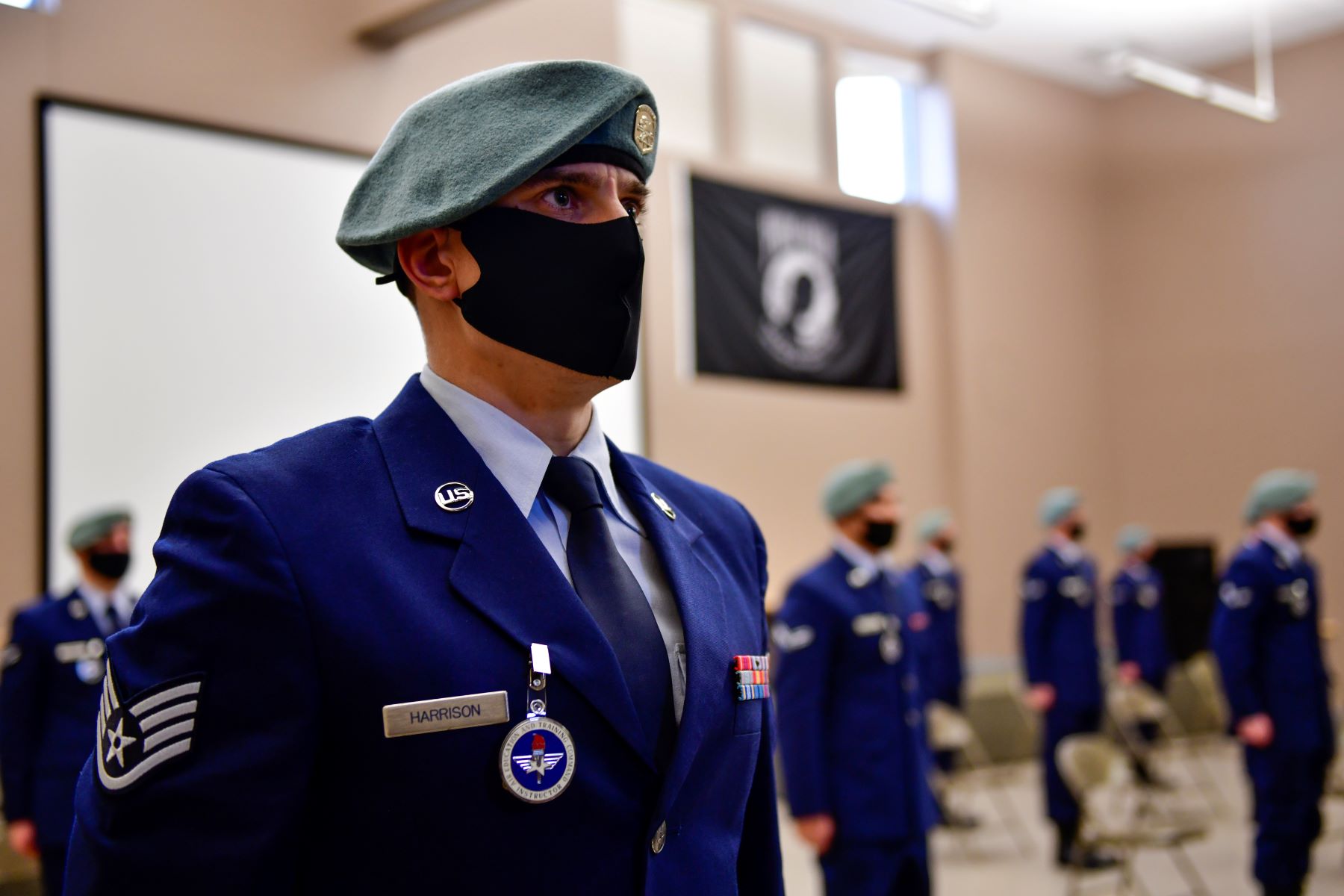
The Air Force’s elite survival school just accomplished an almost unheard-of feat: graduating a full class with almost no dropouts.
Twenty-six of 28 students graduated the Survival, Evasion, Resistance, and Escape Specialist apprentice course last week, making it the most successful graduating class in years, according to Air Education and Training officials. Typically, about half of each class washes out during the final apprentice course because of its demanding nature, AETC said.
While the school doesn’t keep full historical records, the latest attrition rate is the lowest in recent memory.
Chief Master Sgt. Alexander Guerrero, 336th Training Group command chief, said the feat is a result of changing the training style and culture at the SERE curriculum’s toughest level.
Read Next: Pentagon Hits Target of 2,500 Troops in Afghanistan Despite New Law Restricting Drawdown
“We have adopted, and rightfully so, coaching, mentoring — not gatekeeping,” Guerrero said in a roundtable discussion with reporters Jan. 7, prior to the graduation ceremony. “[Gatekeeping] is how a lot of things were culturally 30 years ago, 20 years ago. Personality has changed; generations have changed; how you get across to individuals have changed.”
SERE specialist training covers how to evade capture or survive as a hostage in both peacetime and wartime environments, said Col. Nicholas Dipoma, 336th Training Group commander. It includes rescue and urban-focused operations, as well as survival in practically any environment — rural, desert, jungle, coastal areas and even in the water.
The 336th Training Group is responsible for two types of SERE pipelines. While some SERE training is conducted at operational units, the 22nd Training Squadron at Fairchild Air Force Base, Washington, oversees training for aircrew members and special operations forces identified as being at high risk of capture. Meanwhile, the 66th Training Squadron, also at Fairchild, trains airmen to become qualified SERE career instructors, known as the 1T0X1 Air Force Specialty Code. Both squadrons fall under the 336th. There’s also an attachment at Eielson Air Force Base, Alaska, which preps airmen for Arctic survival.
The Air Force is the only service with a dedicated SERE career field. Airmen begin with an orientation course at Lackland Air Force Base in Texas and then move into the indoctrination course at Fairchild. Officials must be confident in students’ abilities before they send them to the official SERE pipeline, said Capt. Kayshel Trudell, AETC spokeswoman.
Following indoctrination, the apprentice course involves the most extensive training on techniques and skills students will need in the field. The six-month curriculum covers 13 phases, including land navigation, personnel recovery and even combat.
Only two classes graduate annually, AETC said. The limited number of classes meant it took a while for officials to pinpoint where students struggled in the pipeline, the officials said.
As part of the new initiative, instructors mentored students with tips such as, “Don’t give your pain a voice,” to keep them from giving up, said Senior Master Sgt. John Conant, SERE Apprentice Course commandant.
“It’s not necessarily just physical. A lot of what we do is mental,” he said.
It’s not the first time the service has focused on counseling troops as they start in a grueling career field.
In 2018, the AETC established its first Special Operations Recruiting Squadron, with mentors working with prospective airmen. The initiative gives recruits a firsthand glimpse of what their duties would be like and prepares them for the special operations community, which for years has had notoriously high attrition rates — some hovering around 80% — depending on career field.
AETC officials are hopeful that future SERE classes will continue the upward trend in graduation rates, staving off a grim future in the career field.
“If we are unable to address the historic attrition throughout this pipeline, the trend is unsustainable,” Dipoma said. “Over the next four years, if we don’t turn attrition in this pipeline around, while also maintaining the same high standard, the career field is going to be … in a bad place.”
— Oriana Pawlyk can be reached at [email protected]. Follow her on Twitter at @Oriana0214.
Related: The Air Force Is Making Changes to Its Enemy Capture Survival School
© Copyright 2021 Military.com. All rights reserved. This material may not be published, broadcast, rewritten or redistributed.
